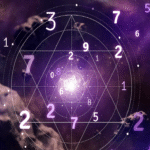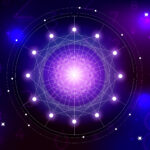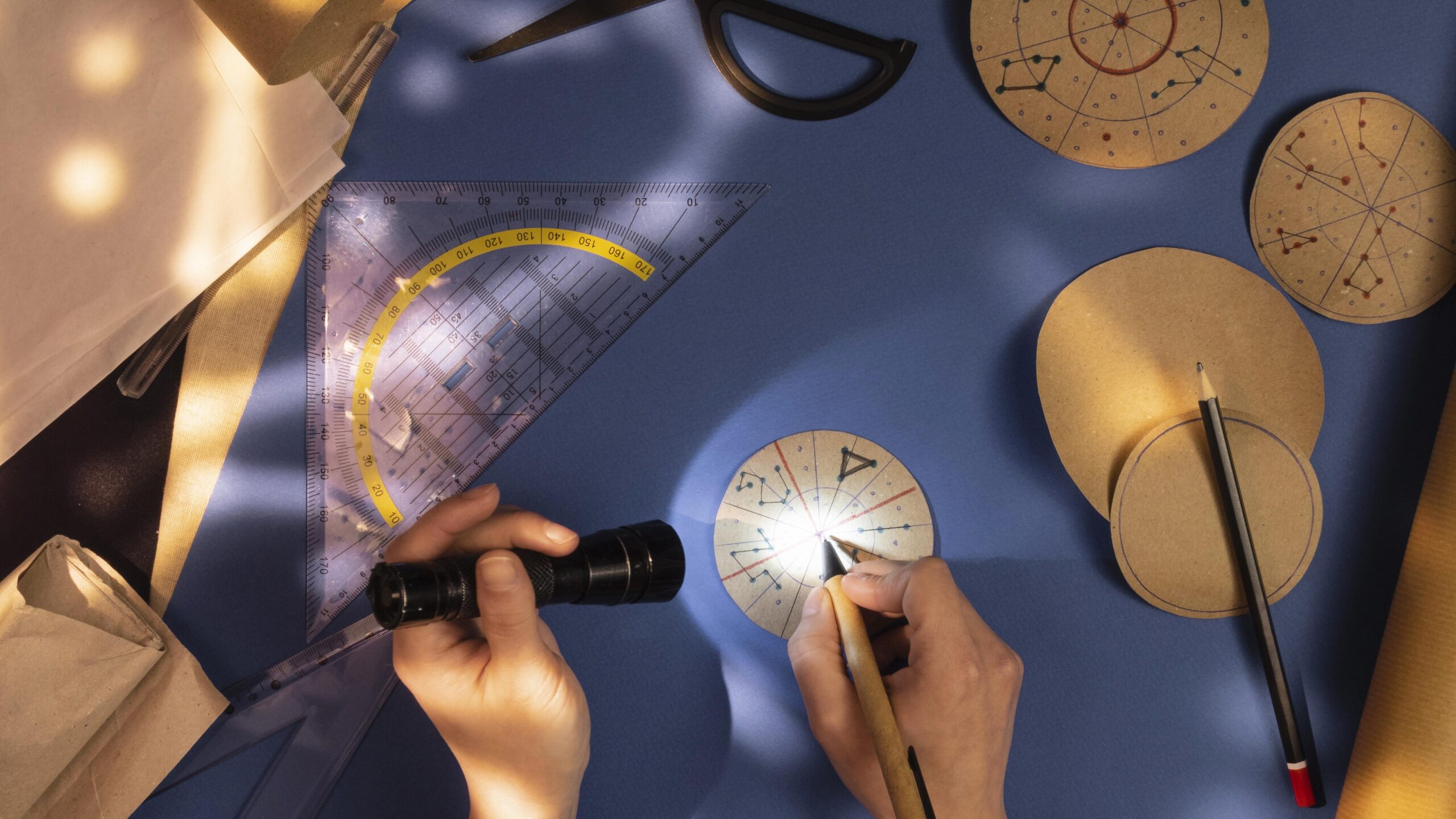The Celestial Foundations
Namaste. Our council convenes today to discuss a topic of frequent inquiry: the role, if any, of Uranus in Jyotish (Vedic Astrology). Discovered in 1781, long after the foundational texts of Jyotish were written, Uranus is not one of the traditional nine Grahas (celestial influencers). We will explore this from multiple perspectives, examining Uranus Sign Meaning (as understood in Western astrology) and considering if or how its themes of Change, Freedom & Innovation might resonate with or differ from existing Jyotish principles.
The Participants:
- Acharya Parashara: A Traditional Jyotishi, grounded in classical scriptures.
- Jyotishi Naveen: A Contemporary Jyotishi, open to exploring modern correlations.
- ** जिज्ञासु (Jigyasu) Student:** An Inquisitive Student, seeking clarity on different astrological systems.
- Viveka Consultant: A Practical Application Expert, focusing on the established tools of Jyotish.
- Moderator: Guiding our exploration.

Round 1: Understanding Uranus – Traditional vs. Modern Views
Moderator: Let’s address the core question. Acharya Parashara, is Uranus used in traditional Jyotish?
Acharya Parashara: Simply put, no. Classical Jyotish, as codified by the ancient Rishis, utilizes the seven visible Grahas (Surya to Shani) plus the two Chhaya Grahas (shadow planets), Rahu and Ketu. These nine Grahas form a complete system for understanding karma, destiny, and all facets of life. The energies attributed to Uranus in Western astrology – sudden change, rebellion, innovation, electricity – are already well-explained within the Jyotish framework through Grahas like Rahu (sudden events, foreigners, technology), Mangal (energy, pioneering action), or specific volatile Yogas (planetary combinations). There is no need for, nor textual basis for, incorporating Uranus.
Jyotishi Naveen: From a contemporary perspective, while acknowledging Acharya Parashara’s point about traditional non-use, some modern Jyotishis engage in comparative study or theoretical mapping. They might observe correlations between Uranus transits (calculated ephemerally) and events reflecting Uranus Sign Meaning – sudden upheavals, technological breakthroughs (Innovation and Genius Astrology themes), or desires for Freedom Astrology. It’s more about observing parallels with Western interpretations rather than integrating Uranus as a ‘tenth Graha’ with defined dignities, aspects (Drishti), or Karaka roles within the Jyotish system. Some might see its energy as a collective influence, perhaps resonating with Rahu’s disruptive quality but with a different flavour.
जिज्ञासु (Jigyasu) Student: This is confusing. If Jyotish explains everything with 9 Grahas, why do some people try to include Uranus? Does seeing Uranus in a chart add anything that Rahu or Mangal doesn’t already cover? Learning the 9 Grahas is already complex!
Viveka Consultant: As a practical consultant, my focus is on the reliable, time-tested tools of Jyotish. Introducing Uranus adds a variable without established rules for interpretation, dignity, aspects, or remedial measures (Upayas) within the Vedic system. Themes of sudden change (Astrology Rebellion Style, Where You Seek Freedom Astrology) are effectively analyzed through Rahu’s placement, Dasha periods (especially Rahu Dasha), challenging transits (Gochar), or specific Yogas indicating instability. Adding Uranus often creates more confusion than clarity for practical guidance based on Jyotish principles.
Acharya Parashara: The attempt to include outer planets often stems from a Western astrological framework being superimposed onto Jyotish. The systems have different philosophical bases and methodologies. Jyotish is inherently holistic with its nine Grahas, Nakshatras, Vargas (divisional charts), and Dashas.
Jyotishi Naveen: I agree it shouldn’t be superimposed. However, exploring correlations can be intellectually stimulating. For example, the collective focus on technology (a Uranian theme) could be seen through the lens of Rahu’s significations for unconventional and foreign technologies becoming mainstream during certain large-scale cycles. It’s a resonance, not a replacement or addition.
Perspective Intersection: The traditional view firmly rejects Uranus (Parashara), while contemporary exploration notes theoretical parallels with existing Jyotish factors like Rahu (Naveen), leading students to question the necessity (Jigyasu), and practical application favoring the established, sufficient tools of Jyotish (Viveka).

Round 2: Potential Correlations and Distinctions
Moderator: If one were to theoretically compare Uranus themes to Jyotish, where might parallels be drawn, and what are the key distinctions? Jyotishi Naveen?
Jyotishi Naveen: As mentioned, the most frequent comparison is with Rahu. Both relate to suddenness, disruption of status quo, foreigners or foreign things, technology, and unconventionality. However, Rahu’s core is desire, obsession, illusion, and amplifying the nature of its dispositor or associated planets. Uranus, in Western thought, carries a more detached, intellectual, ‘awakening’ quality alongside its disruption. Rahu is deeply tied to individual karma; Uranus is often seen as more transpersonal or generational. Themes of innovation (Innovation and Genius Astrology) might also be seen via a strong Budha (Mercury) with Mangal (Mars) or Rahu influences. Rebellion (Astrology Rebellion Style) could be shown by an afflicted Surya (Sun) or Mangal, or specific challenging Yogas.
Acharya Parashara: These correlations are superficial. Rahu’s effects are deeply embedded in the karmic narrative shown by the Dasha system and its Nakshatra placement – a level of specificity Uranus lacks in Jyotish. Sudden events are clearly indicated by specific combinations and transits involving traditional Grahas, particularly Rahu, Ketu, Mangal, and Shani, interacting with vulnerable points in the natal chart or Dasha sequence. Attributing these solely to an external planet like Uranus ignores the intricate workings of Jyotish.
Viveka Consultant: Practically, if a client experiences sudden job loss or a desire for radical change, I analyze the current Dasha/Antardasha, relevant transits (especially of Saturn, Rahu, Ketu), Vargas like the D10 (career), and natal placements indicating volatility. These provide actionable insights and potential timing, which referencing Uranus does not, within the Jyotish framework. The desire for freedom (Where You Seek Freedom Astrology) is often seen through the 12th house, Rahu/Ketu placements, or afflictions involving Chandra (Moon).
जिज्ञासु (Jigyasu) Student: So, Jyotish already has specific ways to understand themes like sudden change, technology, and rebellion using the 9 Grahas, Dashas, and Yogas? It sounds like adding Uranus might be redundant or confusing if you know Jyotish well.
Hidden Wisdom: The concept of Argala (intervention/obstruction) and Virodhargala (counter-intervention) created by planetary positions relative to each other offers a complex traditional framework for understanding sudden helps or hindrances, which can manifest as unexpected changes, far more nuanced than simply assigning ‘suddenness’ to an outer planet.
Round 3: Why Stick to Traditional Grahas?
Moderator: Acharya Parashara, Viveka Consultant, why is adherence to the nine traditional Grahas important in Jyotish?
Acharya Parashara: Jyotish is ‘Deva Vidya’ – divine knowledge revealed by the Rishis. The system of 7 visible Grahas plus 2 Chhaya Grahas is complete and interconnected with other Vedic sciences like Ayurveda and Vaastu. It’s based on direct perception (visible planets) and calculable sensitive points (nodes) that have tangible effects observed over millennia. Their number (9) has numerological significance. The intricate rules of Drishti, Yogas, Dashas, Vargas, and Nakshatras were developed for these nine influencers. Introducing new planets disrupts this divinely ordained, internally consistent system.
Viveka Consultant: From a practical standpoint, the predictive and interpretive power of the nine Grahas, combined with the precision of the Vimshottari Dasha system (and others), Nakshatras, and Varga charts, is immense and sufficient. It provides a clear framework for understanding past karma, present tendencies, and future probabilities, along with potential remedies (Upayas) tied directly to the traditional Grahas. Adding outer planets lacks this established framework for practical application, prediction, or remediation within Jyotish. It dilutes the focus from mastering the profound depth already available.
Jyotishi Naveen: While I respect the completeness of the traditional system, I do think the discovery of outer planets coincided with major shifts in global consciousness (e.g., Uranus and revolutions/electricity). Acknowledging these correlations, without disrupting the core Jyotish methodology, might offer some context for collective trends. But for individual chart reading, the 9 Grahas remain the bedrock.
जिज्ञासु (Jigyasu) Student: It makes sense. If the system is already complete and provides answers, adding more elements without clear rules seems unnecessary complexity, especially for practical guidance.
Critical Considerations: The debate often reflects differing worldviews – one rooted in revealed scripture and tradition, another seeking to integrate all observable phenomena. For students and practitioners, clarity on the system being used is essential. Mixing systems without deep understanding can lead to inaccurate interpretations.
Closing Reflections: Integrating Wisdom (or Acknowledging Boundaries)
Moderator: So, how should our audience approach Uranus in the context of Jyotish?
Viveka Consultant: For practical Jyotish consultations focused on understanding your life path, karma, predictions, and remedies, focus entirely on the nine traditional Grahas and the established techniques of Jyotish. You will find the system complete and profoundly insightful without needing Uranus.
जिज्ञासु (Jigyasu) Student: Understand that Uranus is primarily a Western astrology concept. If you study Jyotish, dedicate your energy to mastering the nine Grahas, Nakshatras, Dashas, and Vargas first – there’s a universe of wisdom there! Be aware of the difference if you encounter resources trying to blend the systems.
Jyotishi Naveen: Appreciate the themes Uranus represents in Western astrology (change, innovation, freedom) and observe if and how similar themes manifest in your life or collectively. You can then explore how traditional Jyotish explains these phenomena through its own lens (Rahu, Mangal, Yogas, Dashas) – this can be a rich comparative study.
Acharya Parashara: Trust the wisdom of the Rishis. The nine Grahas are the divine messengers governing karma and illuminating the path. Delve deep into understanding their nature, interactions, and the timing systems revealed in classical Jyotish. This is the authentic path to self-knowledge and navigating life according to Vedic principles. Uranus is outside this sacred framework.
Moderator: Thank you, council. While Uranus holds significance in other astrological systems, traditional Jyotish operates with a complete and internally consistent framework of nine Grahas. Themes associated with Uranus are understood within Jyotish through its own powerful tools and significators, primarily Rahu and Mangal, combined with specific chart configurations and timing techniques.
Further Learning
- Rahu and Ketu (The Nodes) Explained in Jyotish
- Mangal (Mars) in Jyotish: Action, Drive & Desire
- Introduction to Grahas (The 9 Planets) in Vedic Astrology
- Understanding Dasha Systems in Vedic Astrology
- Yogas (Planetary Combinations) in Jyotish









